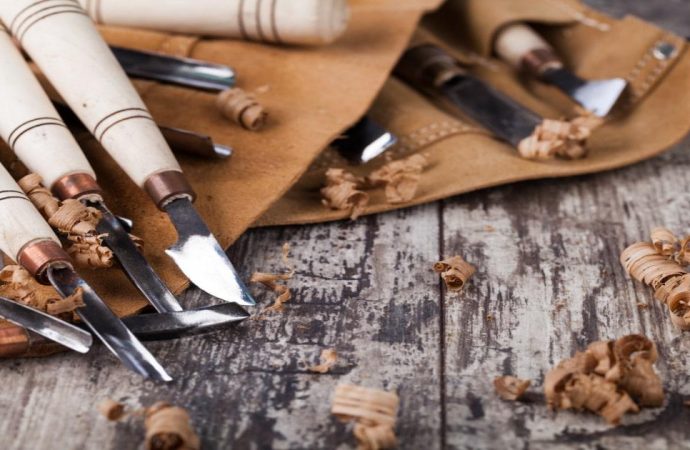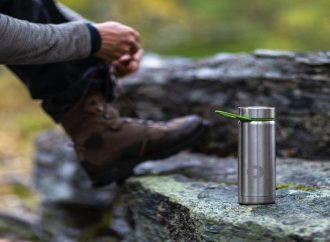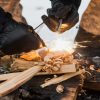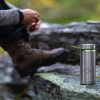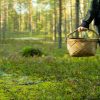Britain is home to a variety of different woods, either as native trees or species that have been brought here from other parts of the world. Wood itself can be split into two categories – hard wood and soft wood. Hard wood is considered dense and easy to maintain, yet it can be difficult to
Britain is home to a variety of different woods, either as native trees or species that have been brought here from other parts of the world. Wood itself can be split into two categories – hard wood and soft wood.
Hard wood is considered dense and easy to maintain, yet it can be difficult to cut and grow. On the other hand, soft wood is easy to cut and grows fast, but is not as dense.
In this article we look at the different types of hard wood and soft wood in the UK, what they are suited for in a survival setting, how to identify them and how to ensure they are fully prepared for use in your crafting projects. The best woods for carving and whittling items can be found abundantly in the UK depending on what kind of project you wish to undertake.
How To Prepare Wood For Carving
Before you begin any craft projects, it is vital to ensure that the wood is suitably repaired. The way to do this is to set it out to dry before use. This is because wet wood is likely to warp and crack, whereas if you give it time to dry out properly, it will help create a much more durable product.
Depending on your circumstances, you may opt to dry your wood indoors or outdoors. When drying it indoors, it is important to make sure that there is a fresh supply of air in the room to help it dry properly.
If you do not have the indoor space, it is possible to dry the wood outdoors too. Of course, the weather will play a big part in this. Drying wood when it is warm and sunny is the best option.
However, if that is not possible, you can cover the wood with some sort of waterproof cover in order to keep it dry.
Whichever route you decide to take, the wood drying process is likely to take several weeks or months, depending on how wet the wood was to begin with. Based on this, it is important to plan and begin to prepare the wood for drying long before you need to have the finished product by.
Once you have your wood ready for carving, you need all of the right tools for carving. Small and intricate designs require delicate tools, but you can now buy full wood carving kits online that have every kind of tool you will need. Or you can just use a sturdy pen knife to do simple pieces of work provided you have a steady hand.
Combine that with a wood carving book to show you how to whittle wood properly, then you’ll just need to spend some quality time practicing this highly relaxing skill. Better yet, it is the perfect way to pass time constructively when you’ve bugged out into the woods and are surrounded by whittling material!
British Hard Woods

The following types of hard wood are ideal for carving:
Lime – this is a very popular wood to use, especially for beginners because it looks as if it has no grain and is very soft. It is white in colour and is found across the United Kingdom.
They can be identified by looking for the thin branches and needle-like spines which are sharp. The leaves themselves are small ovals and dark green on the top but pale green on the bottom.
Aspen – another white wood that is stronger than wood from a lime tree, but still soft, making it one of the best woods for carving. Aspen trees are found across the UK but are most common in the North-West of Scotland.
They can be identified by their smooth white bark and heart-shaped green leaves.
Butternut – related to the walnut tree, the butternut tree has darker wood than both the lime and aspen but is lighter than walnut. It can be carved easily and then polished up well, making it a good choice for furniture.
This tree is found across Britain and can be identified by the flattened-out ridges on the main body of the tree.
Black Walnut – this tree is also a popular choice for furniture due to the rich colour and grain. It can take a bit more work that the other types of trees so make sure you have the appropriate sharp tools for the job. They can be found all over the UK, but typically in southern parts of the country as they prefer warmer weather.
They can be identified by the dark colour of its bark and the round walnuts on it or around it.
Oak – an iconic British tree, oak can be found across the country, making it a reliable and abundant resource. It is very strong and have a lovely grain, making it ideal for furniture.
There are many species of oak tree, but typically they can be identified by deep ridges on the bark and greatly lobed leaves.
Maple – although this type of wood is coarser and has asymmetrical grain, it can be used for projects if they are planned beforehand. Field maple trees are native to the UK and found throughout the country.
They can be identified by the points on the leaves and deep indentations between each point.
Hickory – this is a hard and dense wood that is a good choice when you want to craft that something that is going to last a long time.
These are found across the UK and can be identified by their grey bark, which begins to peel as the tree ages. As well as this, their nuts are sweet, which helps to identify the tree.
Alder – this is like the lime tree in terms of the features of the wood and is considered as light and soft. The common alder tree is native to Britain, and is found across the country, particularly in the lowlands.
They can be identified by their brown strobiles that hang down, as well as their grey bark and orange-brown flowers that droop down.
Beech – this type of wood is hard and tough, though can shrink over time. As it is so strong, its a good choice for furniture and is one of the best woods for carving smaller items such as utensils.
Native to the South-East of England, the beech tree is identified by its oval leaves that have a tip that comes to a point and curvy edges.
British Soft Woods
There are also a variety of soft woods that can be used for carving. These include:
Cedar – this type is lightweight and weather resistance, making it a good choice for any outside structures or fencing for preppers to keep their survival based home secure.
As it is an evergreen tree, it is easy to identify all-year round with its green needles and brown cones. It can be found across the UK, making it easily accessible.
Pine – this type starts off as yellow in colour but darkens over time, which can add to the aesthetic of what you are crafting. It is a durable wood though can be stubborn due to the grain so some practice may be required.
Pine trees can be found across the country, and there is an abundance of Scots Pine in the Scottish Highlands. It can be identified by the shape of the cones, which are made up of what look like wooden scales.
Fir – like the pine tree, fir trees produce wood that is durable and weather resistance. It also retains its shape through the seasons, making it good to use outside all year round.
It is found across the country and can be identified by its needles which are flat and fat.
Redwood – redwood is a very strong type of wood that can be used for construction beams and decking do its durability. Although it can be found across the UK, particularly in Scotland, it is considered endangered due to its characteristics, so may be difficult to find.
It is identified by its reddish-brown coloured bark and cones.
Spruce – this type is light and soft with good elasticity and strength, making it good option for crafting storage containers and barrels.
They can be found across the UK and identified by their needles that have four sides to them, which are easy to spot by rolling them between your fingers.
Summary
In short, the UK has many different woods that can be used for different purposes. It is important for preppers to select the best time for the job and factor in drying time to prepare the wood before use. The best woods for carving small items are Lime, Aspen and Beech, but for the best woods for carving larger objects like furniture we suggest you opt for choices like oak and pine.
However, using the wood effectively can help you create comfortable shelter, furniture and tools in your new survival setting.

